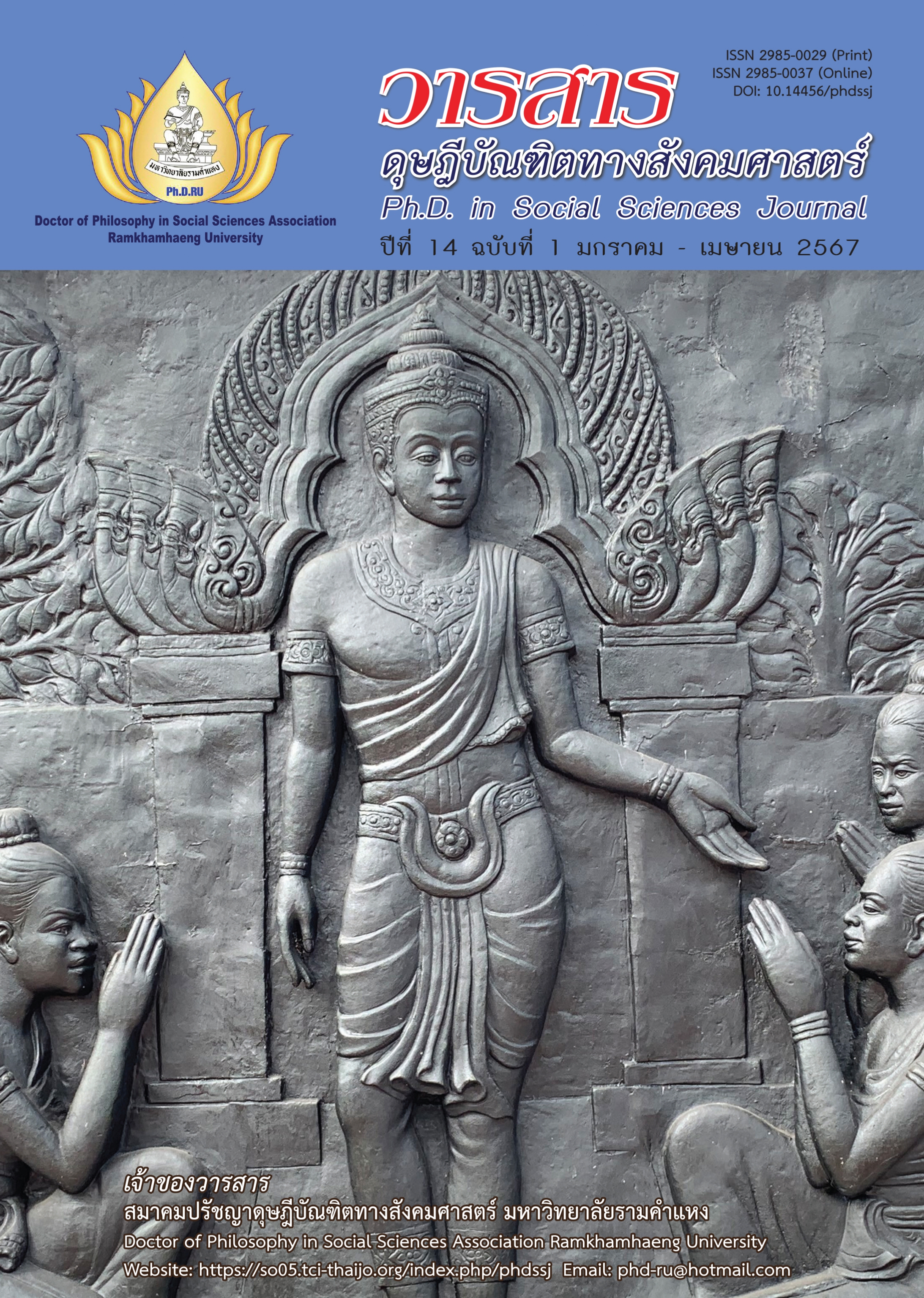Marketing Communication Strategy for Enhance Chiangrai Tourism
Main Article Content
Abstract
This research article aims to study (1) the processes of Chiangrai brand communication (2) stakeholders’ perceptions of Chiangrai brand and (3) the marketing communication strategies for enhancing Chiangrai tourism quality. This research employs qualitative research including documentary, observations, interviews, and group discussions with 27 participants who either had or had not participated in the tourism branding process of Chiangrai province. The collated data were analyzed using a thematic analysis based on the city branding concept.
Findings are as follows: Chiangrai branding focused on utilizing the brand as a functional benefit to develop the province’s tourism through Chaingrai brand DNA: STYLE-C. In terms of brand engagement strategy, it is more concerned about external communication than internal communication. Moreover, there are blurred key driving sections and brand communication policies. This may lead to the lack of brand awareness of both the tourism government and the private sector in the province. Therefore, this paper contributes the 4Cs’marketing communication strategies for Chaingrai tourism enhancement including Construction, Communication, Compliments, and Contributors.
Article Details

This work is licensed under a Creative Commons Attribution-NonCommercial-NoDerivatives 4.0 International License.
Academic articles, research articles, and book reviews in the Ph.D. in Social Sciences Journal are author’s opinions, and not the publisher’s, and is not the responsibility of the Ph.D. in Social Sciences Journal Philosophy Association, Ramkhamhaeng University. (In the case that research is done on human, the researcher has to be trained in Ethics for Doing Research on Human Training and has to produce the evidence of the training).
References
Aaker, D. A. (1991). Managing brand equity: Capitalizing on the value of a brand name. The Free Press.
Blain, C., Levy, S. E., & Ritchie, J. B. (2005). Destination branding: Insights and practices from destination management organizations. Journal of Travel Research, 43(4), 328-338.
Braun, V., & Clarke, V. (2012). Thematic analysis. In H. Cooper, P. M. Camic, D. L. Long, A. T. Panter, D. Rindskopf, & K. J. Sher (Eds.), APA handbook of research methods in psychology, Vol. 2. Research designs: Quantitative, qualitative, neuropsychological, and biological (pp. 57-71). American Psychological Association.
Cai, L. A. (2002). Cooperative branding for rural destinations. Annals of Tourism Research, 29(3), 720-742.
Chumphuvilad, N., & Santawee, K. (2022). Branding for cultural tourism in Lamphun province. Journal of MCU Haripunchai Review, 6(2), 127-141. [In Thai]
Chumpradit, K., & Khunsri, J. (2006). Identity and image of Chaingrai province. Thailand Science Research and Innovation.
Coomber, S. (2007). Branding (2nd ed.). John Wiley & Sons.
Denzin, N. K. (2017). The research act: A theoretical introduction to sociological methods. Routledge.
Ministry of Tourism and Sports, Office of the Permanent Secretary. (2020). Project expenses for surveying the attitudes and satisfaction of Thai and foreign tourists traveling in Thailand. Author. [In Thai]
Harachai, P. (2018). City branding case study Buriram province. Doctoral Thesis of Philosophy (Architecture), Khon Kaen University. [In Thai]
Keller, K. L. (2013). Strategic brand management: Building, measuring, and managing brand equity (4th ed.). Pearson Education.
Knapp, C., & Woodhouse, J. (2003). Place-based pedagogy: Experiential learning for culturally and ecologically sustainable communities. In Experiential-Community-Workbased: Researching Learning Outside the Academy International Conference at Glasgow Caledonian University, Scotland.
Kotler, P. (2003). Marketing management (11th ed.). Prentice Hall.
Morgan, N. J., Pritchard, A., & Piggott, R. (2003). Destination branding and the role of the stakeholders: The case of New Zealand. Journal of Vacation Marketing, 9(3), 285-299.
Pereira, R., Correia, A., & Schutz, R. (2009). Towards a tourism brand personality taxonomy: A survey of practices. In Fyall, A., Kozak, M., Andreu, L., Gnoth, J. and Sibila, S. (Eds.), Marketing innovations for sustainable destinations (pp. 254-267). Goodfellow Publishers.
Pung-nga, A., Jongshitthipol, J., Wongmontha, S., & Thechakana, C. (2017). Destination branding for competitiveness advantage. A case study Pattaya tourism, Chonburi province. Research and Development Journal, Loei Rajabhat University, 12(39), 25-36. [In Thai]
Ritchie, J. R. B., & Ritchie, R. J. B. (1998). The branding of tourism destinations: Past achievements & future challenges. In Annual Congress of the International Association of Scientific Experts in Tourism (pp. 1-31). Marrakech, Morocco.
Rodríguez-Molina, M. A., Frías-Jamilena, D. M., Del Barrio-García, S., & Castañeda-García, J. A. (2019). Destination brand equity-formation: Positioning by tourism type and message consistency. Journal of Destination Marketing & Management, 12, 114-124.
Rogers, C. R. (1959). A Theory of therapy, personality, and interpersonal relationships: As developed in the client-centered framework. In S. Koch (Ed.), Psychology: A study of science, Formulations of the Person and the Social Context (pp. 184-256). McGraw Hill.
Srisutto, S. (2012). Destination branding strategy: A case study of Bangrak district. Chulalongkorn Business Review, 34(4), 139-161. [In Thai]
Turner, R. C., & Carlson, L. (2003). Indexes of item-objective congruence for multidimensional items. International Journal of Testing, 3(2), 163-171.
Wattanarak, S. (2020). Provincial identity communication through mascot for Thailand’s tourism promotion. Doctoral Dissertation of Communication, University of the Thai Chamber of Commerce. [In Thai]


